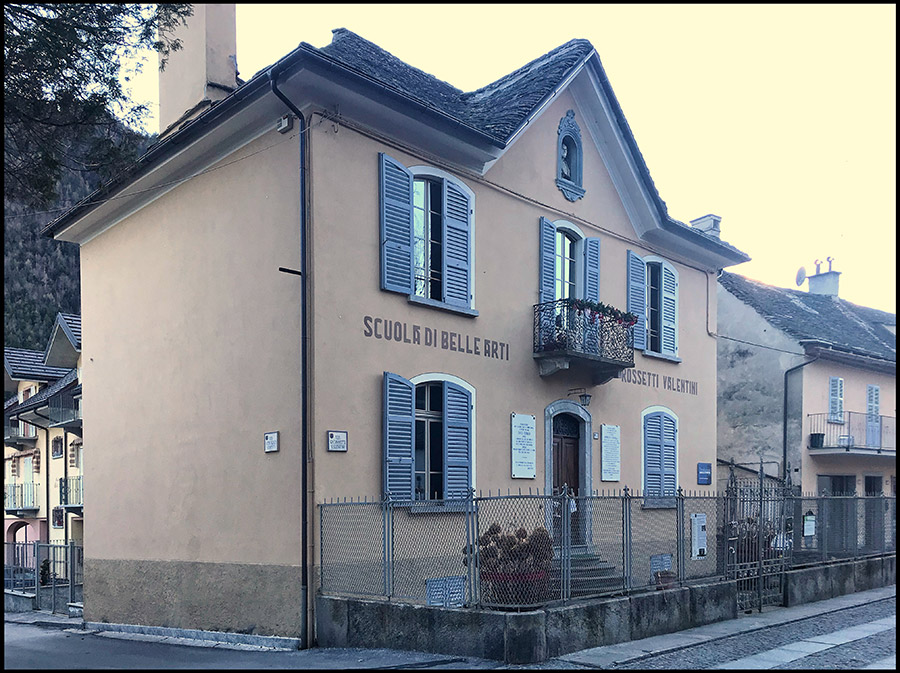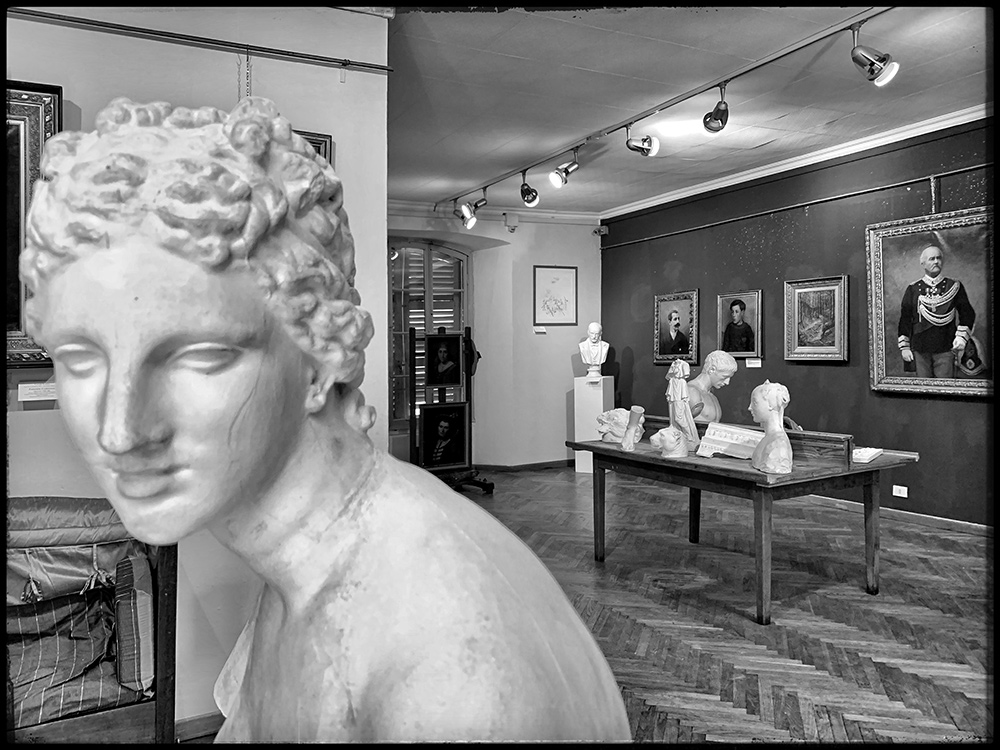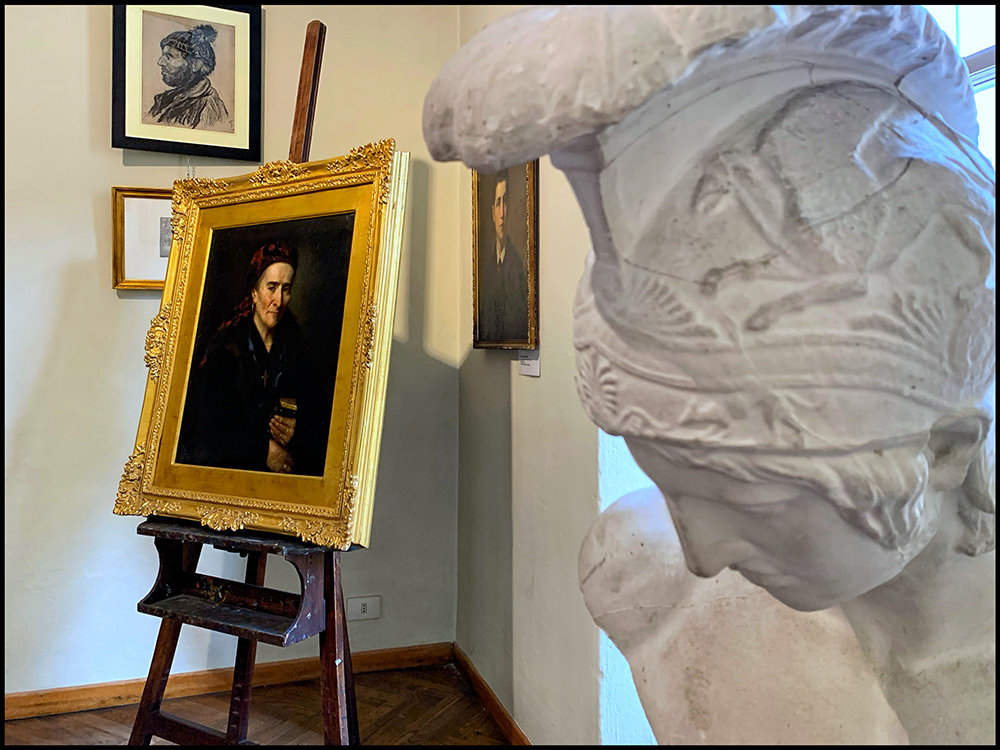The Rossetti Valentini School of Fine Arts is based in the historic centre of Santa Maria Maggiore, a charming village located in the heart of the Vigezzo Valley (a plateau that connects Piedmont with Switzerland).
The area is known as the “Valley of the Painters” thanks to its historical connection with painting and with the school itself.
From the mid 17th century, young local people could learn the art of drawing in workshops in the various towns in the valley. Many painters emigrated abroad so they could hone their skills or seek their fortunes, only to return with new ideas, techniques and materials from all over Europe.


One of the most prominent among the many emigrants was Giovanni Maria Rossetti Valentini, an artist from Vigezzo who found fame in France as a painter and high school teacher. In 1868, after a fifty-year career, Giovanni Maria decided to return to Santa Maria Maggiore (the town where he was born in 1796) and began giving free courses in drawing and ornamental design for young people keen to learn the basics of painting. In 1878, Rossetti Valentini founded the Rossetti Valentini School of Fine Arts, to which he left all his assets to ensure its upkeep.
Rossetti’s aim was to promote the prestige of a profession that derives from academic training, and to ensure its economic worth and effectiveness, since being a painter meant carrying out a real trade. By the early 20th century, under Enrico Cavalli, the school had become an established institution and a unique example in the Alps.
The roots of Vigezzo painting lie in portraiture and religious painting, areas in which apprentices tried their hand through producing commissioned works. It wasn’t until the late 19th century that they devoted themselves to representing landscapes and to the enhancement of light as the protagonist of their work.
These experiments opened new possibilities and international success for many artists from the valley. They include Giovanni Battista Ciolina (1870-1955), Carlo Fornara (1871-1968), Lorenzo Peretti Junior (1871-1953), Alfredo Belcastro (1893-1961), Severino Ferraris (1903-1979), Giuseppe Magistris (1911-1967) and Antonio Gennari (1923-2002).
At the turn of the 19th and 20th centuries, the School of Fine Arts experienced its golden age with a succession of great masters who enhanced its fame, but from the 1940s the school’s fortunes began to change.
As World War II loomed, the school could no longer function properly; training was limited to a few hours of classes during the long winter evenings, and finally only a few summer courses remained for recreational rather than academic purposes. The bond between the painters and their school remained strong however, so much so that two important properties that belonged to two of the leading Vigezzo painters of the 20th century were left to the school: the painter Severino Ferraris’s studio in Prestinone and Alfredo Belcastro’s house-studio, “Il nido del sole“, in Santa Maria Maggiore.


Today, the historic building of the School of Fine Arts is used as a museum that holds original art collections, furniture and objects. In recognition of its original educational role, courses in drawing, wood carving, comics and other projects, such as the Mountain Academy -three days in the Alps to create an artist’s notebook- are still held.
The first decade of the new millennium saw a relaunch of the school thanks to the valuable leadership of Susanna Giorgis, while in 2019 its legal status was changed from IPAB (Public Assistance and Charitable Institutions) to Foundation.
Thanks to new planning and energy, the school is being reborn. The expansion of the historic building, supported by the Cariplo Foundation and the City of Santa Maria Maggiore, will increase the internal space to host exhibitions, training courses and events, without sacrificing the museum narrative of its historic part.
Projects funded by major banking foundations are providing the impetus to tackle contemporary challenges, including the Val Vigezzo. The Valley of the Painters project, supported by the Fondazione Compagnia di San Paolo, which has seen important activity in areas such as the organisation and digitalisation of archives, scholarships, exhibitions, outdoor trails through landscapes painted by the Vigezzo masters and new training courses. From the year 2021, the historic building of the School of Fine Arts has been renovated and expanded, thanks to the financial support of the Municipality of Santa Maria Maggiore and the substantial contribution of the Cariplo Foundation, as part of the Emblematic Projects. A path that is leading to the grand inauguration on 24 June 2023 (also made possible thanks to the contribution of the VCO Community Foundation and the funding of the Interreg Paes.CH.IT. project), which will represent a definitive relaunch of the Rossetti Valentini School of Fine Arts as a center of education and cultural production.
Sign up to receive news on events, exhibitions and trainings from the Rossetti Valentini School of Fine Arts Foundation.
Iscriviti per ricevere le news su eventi, mostre, incontri di formazione organizzati dalla Fondazione Scuola di Belle Arti Rossetti Valentini.